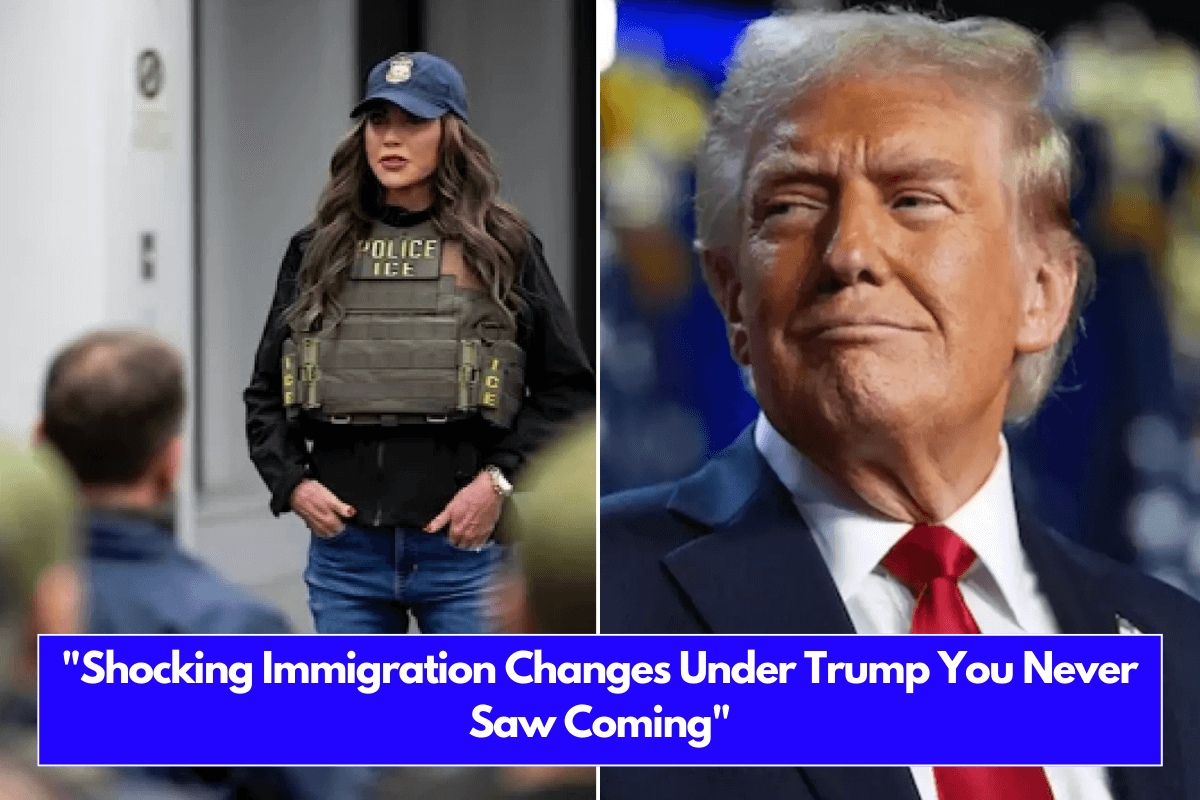President Donald Trump wasted no time making immigration a central issue of his administration. Within the first two weeks, his policies have created significant changes, fear among immigrant communities, and legal challenges. From mass deportations to stricter border security measures, here’s a look at the key actions and their impact.
Major Immigration Orders Signed by Trump
President Trump signed at least 10 executive orders and actions on immigration, fulfilling promises made during his campaign. These orders cover various aspects such as deportations, border security, and policy changes targeting both violent criminals and non-violent undocumented immigrants.
1. Mass Deportation Efforts
One of the administration’s primary focuses is the arrest and deportation of undocumented immigrants. In the first six days of this effort, over 5,843 people were detained, averaging 973 arrests per day, according to Immigration and Customs Enforcement (ICE).
2. Military Support for Deportations
Military planes are now being used to transport undocumented immigrants for deportation. In addition, a migrant detention center is being opened at Guantanamo Bay, with 30,000 beds reserved for those deemed “dangerous criminals.”
Trump explained that some detained immigrants are so dangerous that even their home countries may not be willing to take them back. “We don’t want them coming back,” Trump said.
Border Security and Mexico’s Role
To enhance border security, Mexico’s president agreed to deploy 10,000 troops along the border, aiming to reduce the flow of migrants. Defense Secretary Pet Hegseth also visited the U.S.-Mexico border to inspect the situation as part of Trump’s ongoing push to restrict illegal crossings.
Key Policy Changes Under the Trump Administration
1. The End of Protected Zones
A long-standing policy limiting ICE arrests at sensitive locations, like schools and churches, has been abolished. Now, migrant arrests can occur in previously protected spaces, adding to the fear among immigrant communities.
2. Laken Riley Act
Trump signed the Laken Riley Act, granting law enforcement more power to deport undocumented immigrants, including those accused of non-violent offenses. This policy extends beyond violent criminals, widening the net of possible deportations.
Denying Birthright Citizenship
Trump is pushing to end the practice of granting U.S. citizenship to children born in the country if their parents are undocumented immigrants. This controversial proposal could reshape immigration laws that have been in place for generations.
Reactions from Local Leaders and Communities
In New York City, the reaction to the Trump administration’s immigration measures has been mixed. Mayor Eric Adams has stated that the city will cooperate with ICE in cases involving violent criminals. However, the NYPD clarified that it will not participate in the civil enforcement of immigration laws.
Councilwoman Alexa Avilés believes more needs to be done to protect immigrant communities. “What we’d like to see from this administration is a stronger commitment to defending immigrant New Yorkers,” she said.
Religious organizations, such as Catholic Charities, are also concerned about the impact on vulnerable families. Father Eric Cruz of the Bronx branch commented, “It’s disturbing, but we need to understand the legal boundaries and what can be done to support our communities.”
Sanctuary Cities Under Scrutiny
On February 11, Mayor Adams and leaders from other sanctuary cities will testify before a House Oversight Committee. The discussion will focus on their refusal to fully cooperate with federal immigration enforcement and how their policies balance public safety with protecting immigrants.
Trump’s early immigration actions have already reshaped the political landscape, creating both support and backlash. His administration’s focus on strict enforcement, military involvement, and policy reforms highlights a drastic departure from previous approaches.
While local leaders and immigrant communities continue to respond, it’s clear that immigration will remain at the forefront of U.S. politics. As these policies evolve, they will likely have lasting effects on millions of people and the nation’s future immigration framework.
